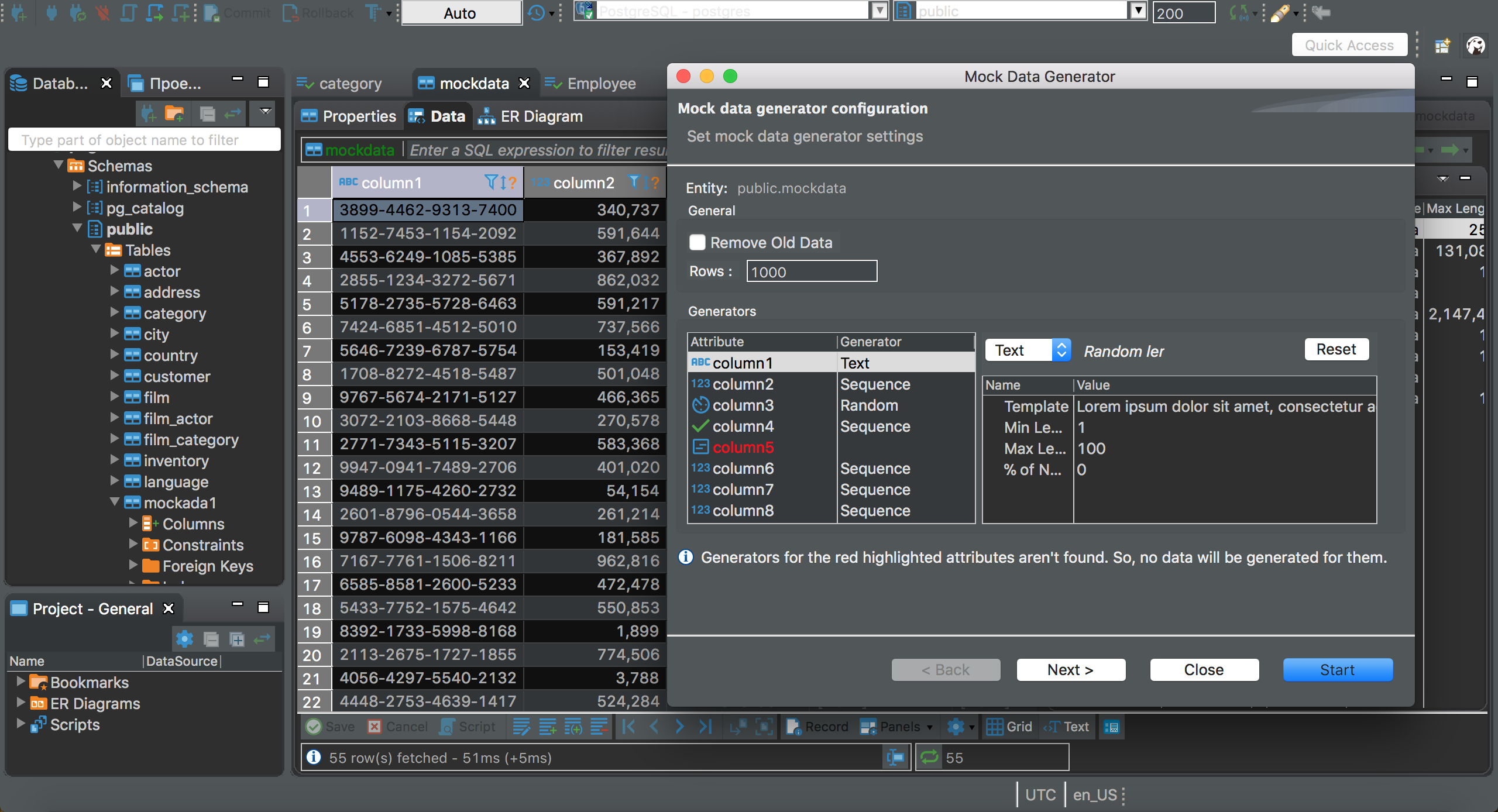DBeaver is a free and open source universal database management tool for developers and database administrators. With DBeaver, you are able to manipulate your data like in a regular spreadsheet, create analytical reports based on records from different data storage, and export information in an appropriate format. For advanced database users, DBeaver suggests a powerful SQL-editor, plenty of. Universal Database Manager and SQL Client. Helium is diatomic. DBeaver has 22 repositories available. Follow their code on GitHub. Academic License.
Major changes since 7.1: Logitech c270 hd drivers for mac.
- Simplified database structure view was added
- Database maintenance tools can be saved as tasks now
- Table and schema size statistics were added in the database navigator
- Import from multiple CSV files was added. Files can be imported into new or existing tables
- Many problems with UI freeze on disconnect or query cancel were fixed
- Database navigator rendering was redesigned
- A number of problems with keyboard shortcuts were fixed
- Git integration was improved: now we show file status in the Project Explorer view
- New database drivers were added: YugabyteDB and SQreamDB

Changes since 7.1.5:
- Problem with database list load was fixed (PostgreSQL, Redshift, MySQL, Oracle, SQL Server)
- Metadata editor: edit property form rendering was improved (non-applicable fields are hidden)
- Performance for table statistics reading was improved
- Data viewer:
- Column ordering was fixed (for custom SQL queries)
- UUID transform: version 2 support was added
- Default database name and default user name were added for many database drivers
- Data export: custom data type formatting support was fixed
- PostgreSQL:
- Cursor fetch was fixed
- Native client was upgraded to version 12
- Table OID support was fixed (PG 12)
- PgPass parser was improved (support for escaped characters was added)
- Oracle:
- Materialized view comment editor was fixed
- View definition reading was fixed (for non-DBA users)
- Table reading now uses DBA views (optional)
- Profile resources metadata reading was fixed
- MariaDB/MySQL: table column resolving was fixed
- CockroachDB: connectivity problem was fixed
- Greenplum:
- Metadata search was fixed (for procedures)
- Table metadata reading was fixed
- Dark theme support was improved (tab folders, toolbars)
- A large number of minor UI bugfixes
The CData JDBC Driver for Excel implements JDBC standards that enable third-party tools to interoperate, from wizards in IDEs to business intelligence tools. This article shows how to connect to Excel data with wizards in DBeaver and browse data in the DBeaver GUI.
Create a JDBC Data Source for Excel Data
Follow the steps below to load the driver JAR in DBeaver.
- Open the DBeaver application and, in the Databases menu, select the Driver Manager option. Click New to open the Create New Driver form.
- In the Driver Name box, enter a user-friendly name for the driver.
- To add the .jar, click Add File.
- In the create new driver dialog that appears, select the cdata.jdbc.excel.jar file, located in the lib subfolder of the installation directory.
- Click the Find Class button and select the ExcelDriver class from the results. This will automatically fill the Class Name field at the top of the form. The class name for the driver is cdata.jdbc.excel.ExcelDriver.
- Add jdbc:excel: in the URL Template field.

Create a Connection to Excel Data
Follow the steps below to add credentials and other required connection properties.
- In the Databases menu, click New Connection.
- In the Create new connection wizard that results, select the driver.
- On the next page of the wizard, click the driver properties tab.
Enter values for authentication credentials and other properties required to connect to Excel.
The ExcelFile, under the Authentication section, must be set to a valid Excel File.
Built-in Connection String Designer
For assistance in constructing the JDBC URL, use the connection string designer built into the Excel JDBC Driver. Either double-click the JAR file or execute the jar file from the command-line.
java -jar cdata.jdbc.excel.jarFill in the connection properties and copy the connection string to the clipboard.
Below is a typical connection string:
jdbc:excel:Excel File='C:MyExcelWorkbooksSampleWorkbook.xlsx';
Dbeaver Online Banking
Query Excel Data
Dbeaver Online
You can now query information from the tables exposed by the connection: Right-click a Table and then click Edit Table. The data is available on the Data tab.
